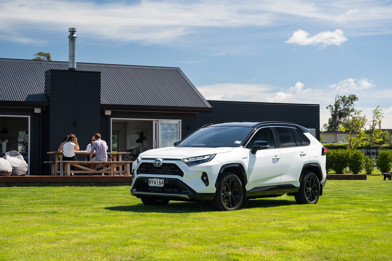Mahindra’s Roxor ‘too Jeep-like’
Have you ever seen David Attenborough-hosted footage of parental fauna pushing their young out of the nest, vis-a-vis just blimmin’ well get on with life? No mercy, no sentimentality, no nurture; just nature?
Well, that’s sort of how we feel about poor old Mahindra’s likely exit from the US market this week.
Mahindra, the massive Indian auto conglomerate you’ve possibly barely heard of, was a favoured child of Jeep back in the day (the “day” being the 1950s).
Over half a century ago, it used to make legally licensed versions of the Willys Jeep for the Indian market, with the American manufacturer’s blessing.
Then it kinda sorta kept doing it. That licensed Jeep morphed into the Roxor and ... well, it didn’t morph far.
Fast-forward to the late 2010s and Mahindra had high hopes of tackling the American off-road enthusiast market with its cost-cutter 4x4.
But the parent now seems to have turfed the fledgling out of the nest. And some.
An administrative law judge in the US has ruled in favour of Jeep owner, Fiat Chrysler Automotive, finding that the Mahindra Roxor violates Jeep’s trade dress.
You what? “Trade dress” is a term for the distinct characteristics of a product’s visual appearance. Jeep was concerned with how the Roxor’s hood latches, body shape, door cut-outs — essentially the entire vehicle — resembles the classic Jeep CJ. And yeah, we can see its point ...
So, the Roxor looks likely to be banned from US roads.
And what future does Mahindra as a whole have in the North American new vehicle market as a result?
Probably not a very healthy one. Well, not least until it invents a pick-up truck that looks nothing like a Jeep Gladiator.
Classic livery gets Aussie twist
So, as we go to print this week comes the somewhat inevitable news (based on performance during its past two seasons ) that the Holden Commodore will be killed off next year. The Astra will be led around the back of the shed too, but it’s the demise of the once-mighty Commodore that smarts the most.
Never fear. If you still pine for the glory days of Australian domestic manufacturing, Chrysler has come to the rescue. Admittedly its rescue plan consists mainly of stickers. But still, we love the sentiment.
The Chrysler 300 SRT Pacer celebrates 50 years since the all-Ocker Chrysler Valiant Pacer arrived in order to provide a handy third offering of homespun muscle. School playgrounds all over Australia would soon see fisticuffs based around loyalty to the Valiant, as well as traditional sparring over whether your dad was a Holden or Ford man.
The original Valiant Pacer featured a 3.7-litre straight-six paired with a three-on-the-tree manual gearbox. It’s easy to forget the Pacer 225 (as the badges on the car said) was a six-pot in a time of V8 dominance.
It’s the special colour scheme however, that Chrysler is most interested in now. This edition of their getting-creakier-every-day 300 SRT features black stripes just below the sill line, in homage to the original. The distinctive “wild” yellow paint was a Pacer-only thing, too; hence the 2020 car’s hero state of dress.
We can’t help but wonder what the reaction would have been if you had told an eager Valiant Pacer purchaser in 1970 that one day Chrysler would be owned by ... gasp! Fiat!
Meanwhile, it’s probably also a good time to get a bargain on a Holden Commodore if you want one of the last examples of those.
Volvo’s boxy goodness in a book
Our only Christmas prezzie recommendation this year should be a must-have for anyone who enjoys a good wagon; specifically, a good Swedish wagon.
The Volvo Estate Car: Design Icon & Faithful Companion by Ashley Hollebone explores the suburbs of the 1960s, 70s and 80s. It was a time when the Volvo station wagon suggested a degree of comfortable middle-class wealth.
It didn’t matter whether the owner drove in string-back driving gloves and tweed, a brightly coloured sweater, or the de rigueur black polo neck and horn-rimmed glasses of the architect set; a Volvo wagon was the ever-so-slightly leftfield take on success. Margot and Jerry Leadbetter had one in The Good Life.
The Keatons owned one in Family Ties.
The point is, there is something timeless about what might be considered by many to be design-less. The Volvo station wagon — which started with the 140 and 240 series models — was about as “elongated box” as it got in the world of flashy Euro car design. It was a celebration of the set square, and even today the Scandi manufacturer appears to celebrate its so-called long roof models.
The latest reissue of Hollebone’s book purports to chronicle “the evolution of the Volvo estate car, with every model featured”.
Sounds like Christmas morning to us.




